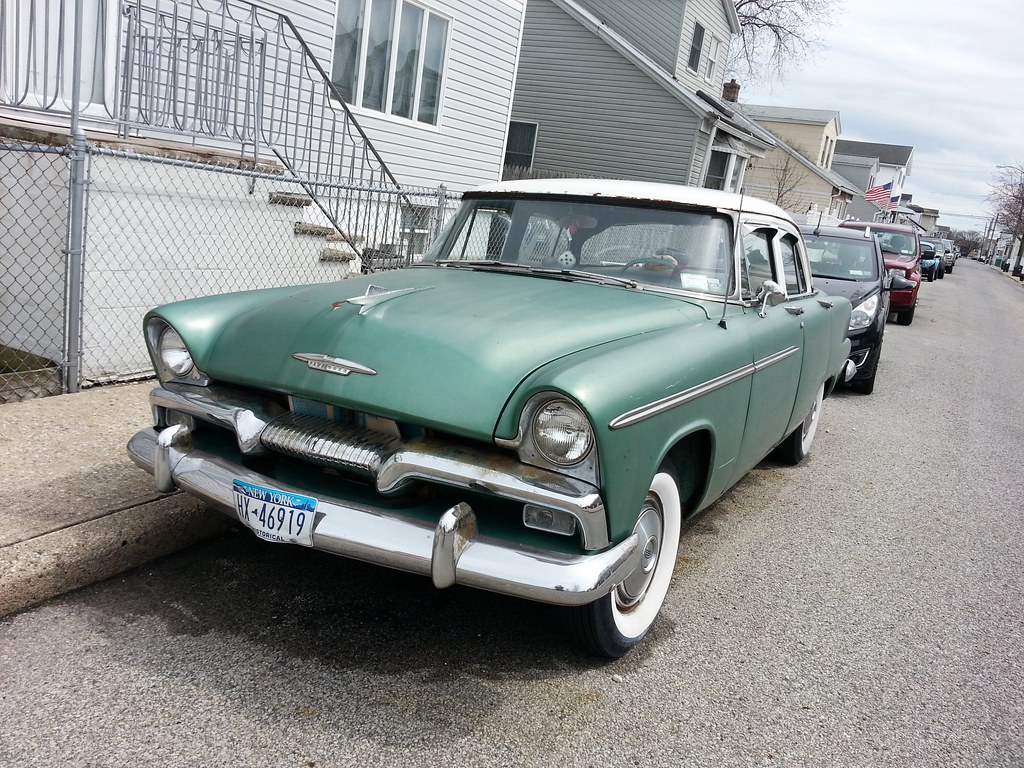
John Stemme was inspired during his travels in Egypt to build this towering monument at his cemetery plot. Standing some 65 feet in height, it was said at the time of its erection in 1896 to be the tallest grave marker in the country. The monolithic granite shaft alone is about 54 feet long; it was carried to New York atop three custom-built rail cars from Barre, Vermont. Weighing around 150,000 pounds before being cut, it was reportedly the largest single piece of granite ever quarried in the US. Neither of those superlative claims holds up to the facts, however: in 1880, an even taller and heavier granite obelisk (photo) was unveiled at the grave of General John E. Wool at a cemetery in Troy, New York.
Some hieroglyphs can be found carved into the pedestal at the base of the monument. They are apparently a representation of Mr. Stemme's name: "it is said that the millionaire spent many weary weeks hunting for a brainy man who was bold enough to undertake the task of translating the name John Stemme into Egyptian."

Can you guess the surname this string of consonants belongs to? Here's the answer.

Isaac K. Funk was the founder of Funk & Wagnalls. We passed by his old house on Staten Island last year.

Borrowing from a previous post:
The founder of Cooper Union, Peter Cooper was an extremely successful inventor (his creations ranged from America's first steam locomotive to an early version of Jell-O) and entrepreneur (we saw the site of one of his glue factories covered in snow back in 2012), a beloved philanthropist, and the cultivator of one of history's great beards.
You can read the text carved into the monument here.

Inscribed on the monument is the final stanza of this hymn by Isaac Watts:
There are no acts of pardon past
In the cold grave to which we haste
But darkness, death and long despair
Reign in eternal silence there

The plaque on the monument at center reads:
THIS STONE
WHICH FORMERLY, WAS A PART OF THE EAST RIVER BRIDGE [a.k.a. the Brooklyn Bridge],
HAS BEEN HERE PLACED BY THE BOARD OF TRUSTEES,
OVER THE REMAINS OF ITS LATE PRESIDENT
WILLIAM C. KINGSLEY,
AS A MEMORIAL OF THE GREAT SERVICES RENDERED BY HIM
IN THE CONSTRUCTION OF THAT WORK.
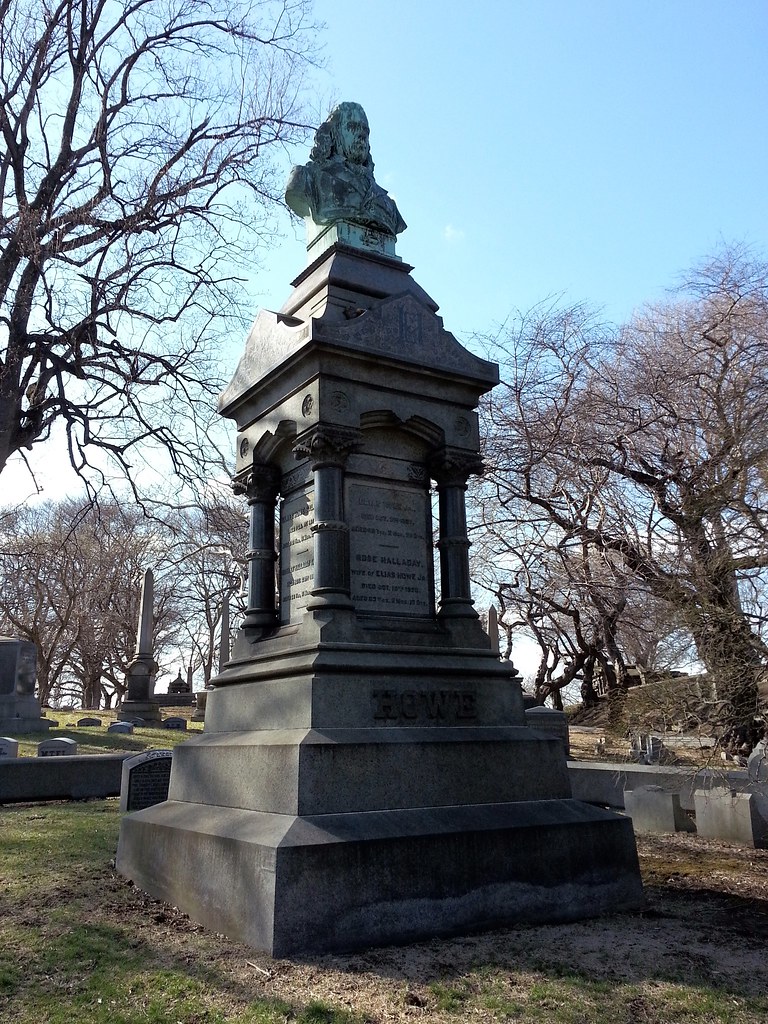
Located right behind the sewing machine pioneer's imposing monument is a headstone for Fannie — the family dog! It reads:
ONLY A DOG DO YOU SAY, SIR CRITIC?
ONLY A DOG, BUT AS TRUTH I PRIZE,
THE TRUEST LOVE I HAVE WON IN LIVING
LAY IN THE DEEPS OF HER LIMPID EYES.
FROSTS OF WINTER NOR HEAT OF SUMMER
COULD MAKE HER FAIL IF MY FOOTSTEPS LED:
AND MEMORY HOLDS IN ITS TREASURE CASKET
THE NAME OF MY DARLING WHO LIETH DEAD.

Green-Wood's chapel is a scaled-down version of Christopher Wren's Tom Tower. Here's a shot I took last fall from the hill in the background.

Here in Sunset Park we find another 34th Street Partnership planter living far from its native land.

Perhaps some improvements are under way at this dilapidated urban barnyard in Gerritsen Beach? But where have the horses gone?

Looks like a worn-down old millstone! The horses in the background certainly seem intrigued by its potential historical value.

Presumably named after the formerly pugilistic Plumb Island, "Plumb" is the most obscure of Brooklyn's street prefixes.

and the Manhattan skyline. This isn't the first discarded vehicle we've seen back weeds in Marine Park, nor was it the only one I saw today.

Of the six intersections found along the course of this street, three have a sign that reads — and has always read — "CELEST CT". The other three, like the one above, have a modified "CELESTE CT" sign, the final "E" in the name concealed beneath a piece of green tape. Google currently labels the street "Celeste Ct", while Yahoo goes with "Celest Ct". Bing plays it safe and uses both "Celest Ct" and "Celeste Ct". NYC's official online map says "CELESTE CT".

This overly basketed (look at the ceiling!) gourmet grocery store occupies a good portion of what used to be Lundy's, a massive seafood restaurant with seating for some 1,700 diners. Here's some info about (and more photos of) the sumptuous decor, and here's an exterior shot of the block-long building, which looks out onto the waters of Sheepshead Bay.

This block-long alley runs between East 21st and East 22nd Streets. Four and a half miles north along East 21st Street, as we've seen, lies a little cul-de-sac named Kenmore Terrace. The fact that the two Kenmores share a name is not a coincidence: it turns out that East 21st, the street that connects them, used to be a Kenmore itself — Kenmore Place. (It appears that a short stretch of East 21st Street was actually officially co-named Kenmore Place in 2000, restoring its historical appellation, although the street signs in that section do not reflect this change.)
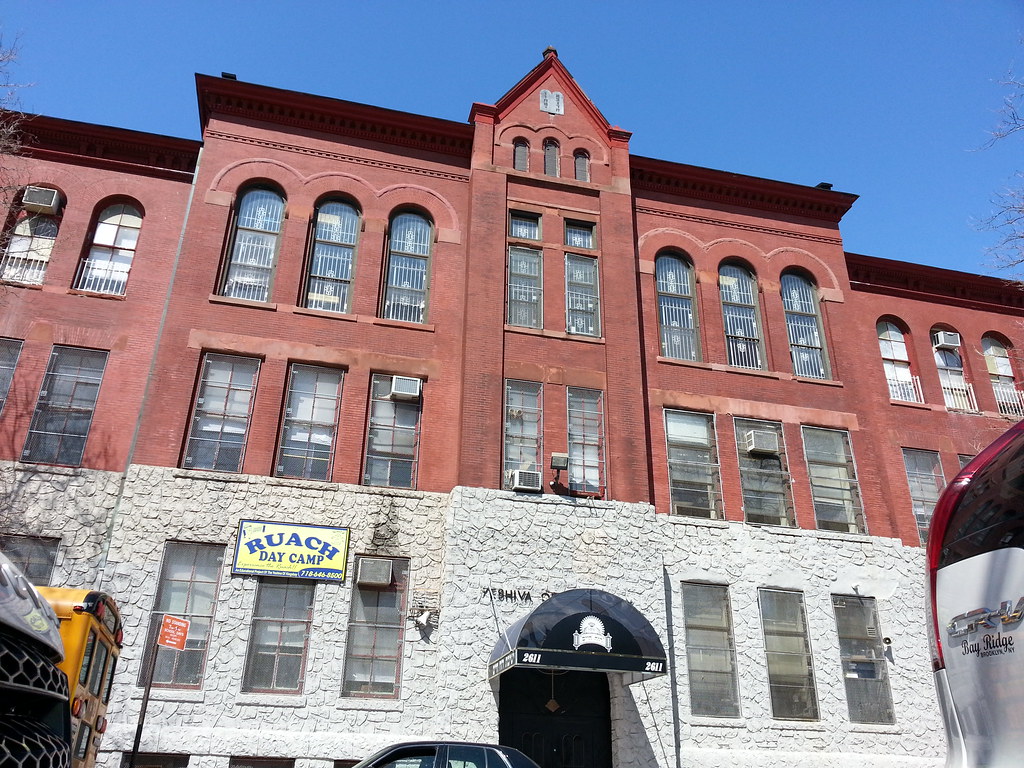
A private Jewish school in what seems to have once been Public School 98. (The building looks nothing like it did in its architectural drawings, however.)
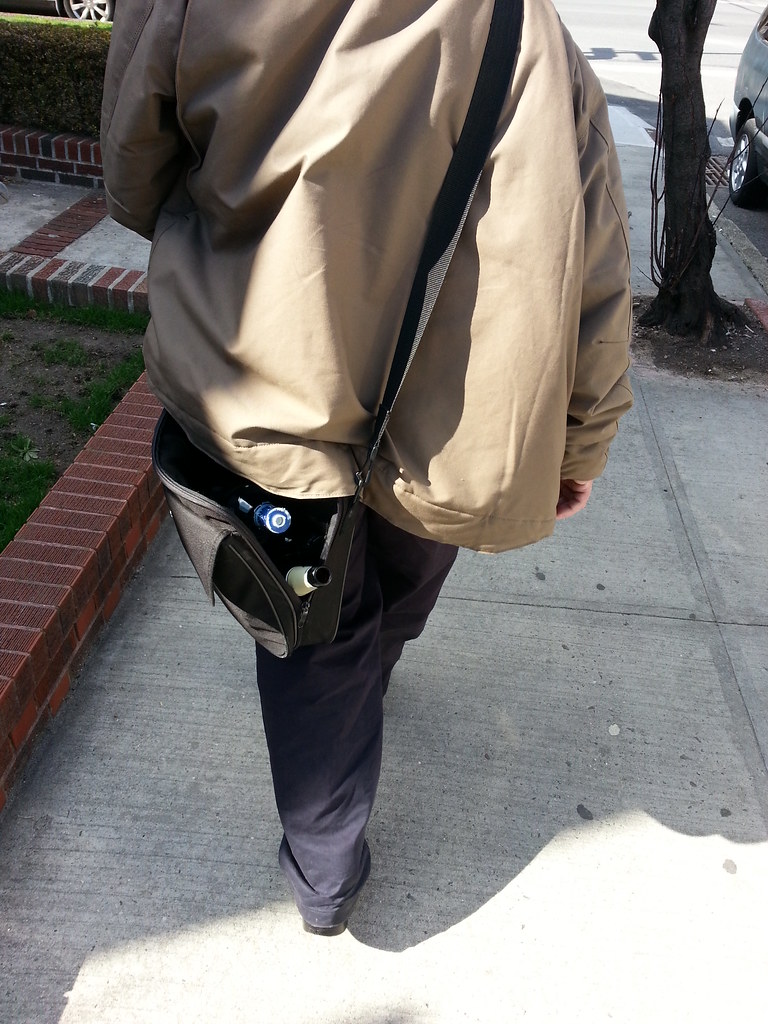
As I approached this gentleman and peered into his open shoulder bag, I began to discern the cause of his wobble.

This "especially fine example of a traditional Dutch Colonial farmhouse" was built in the first few years of the 19th century. After the house changed hands in 1916, the new owner moved it here from its original site farther south and added the dormer windows; the little entrance portico was a 1952 addition.

Built around 1766, this house is "the best preserved, and considered by many the most beautiful example of Dutch Colonial architecture in Brooklyn". Two Hessian soldiers who were quartered here during the Revolutionary War scratched their names into the windows; the framed panes now hang inside on the wall amid a huge collection of relics. In the 250 or so years of the house's existence, it's been occupied by a string of only three different families: the Wyckoffs, the Bennetts, and, since 1983, the Monts. For a look inside the place, check out this photo gallery and this eight-minute video.

If you're in the mood for a long, crazy story, check out the post I wrote last time we saw this footbridge over Sheepshead Bay. (Looking at the previous photo, you'll notice that the bridge has since been fully repainted following its post-Sandy reconstruction.)

This is the last of the large houses that once looked out onto Sheepshead Bay from the northern side of Emmons Avenue. Compare this 1924 aerial image with one from 2012.
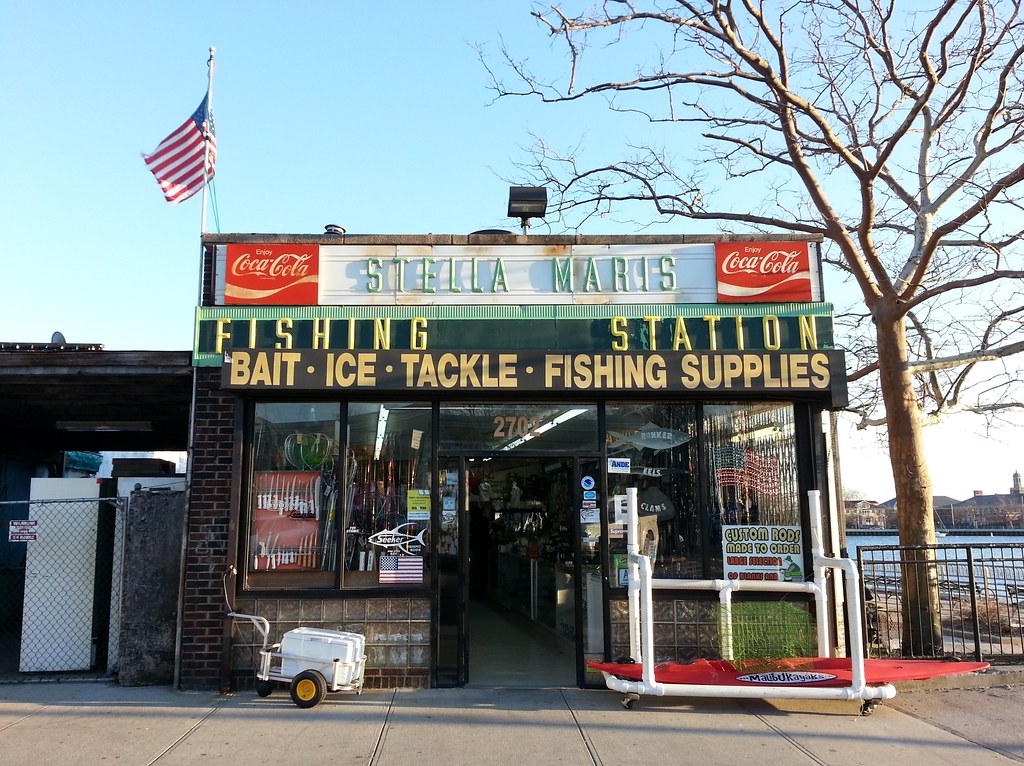
Star of the Sea, opened by six brothers (including an Anthony and a Tony) in 1947








